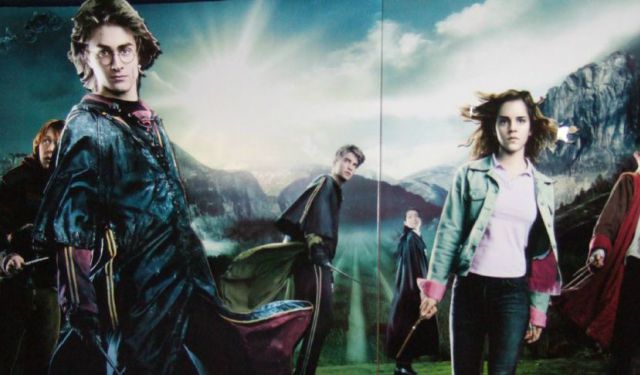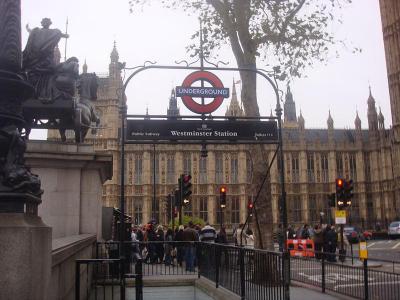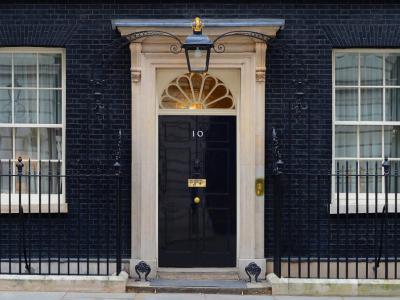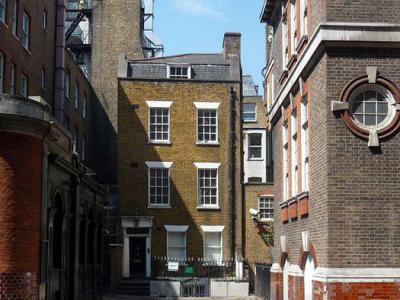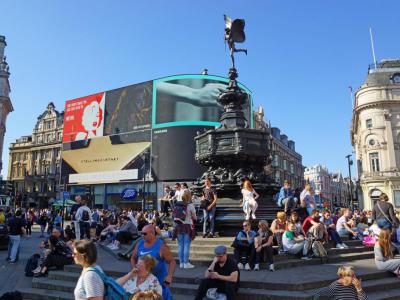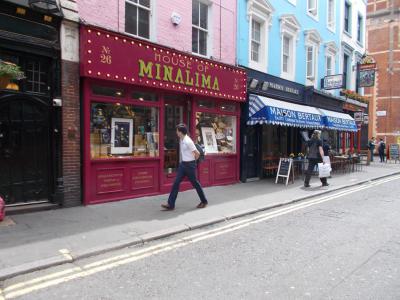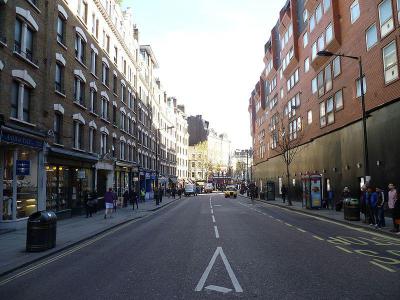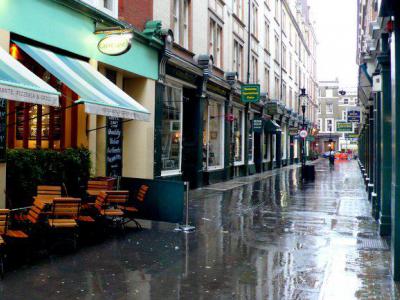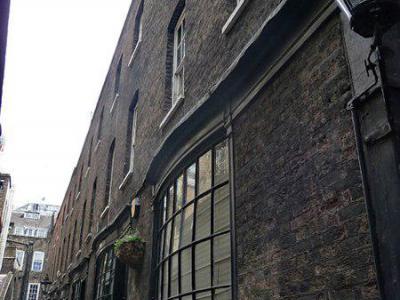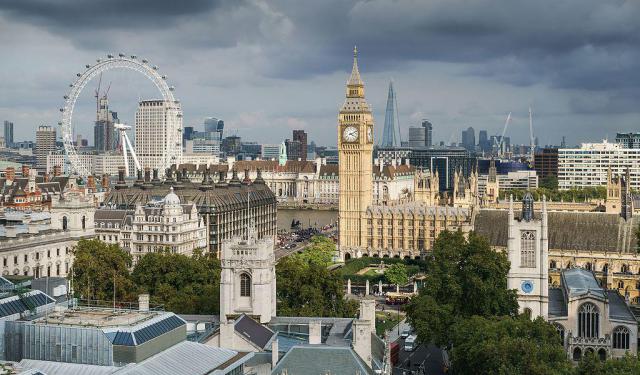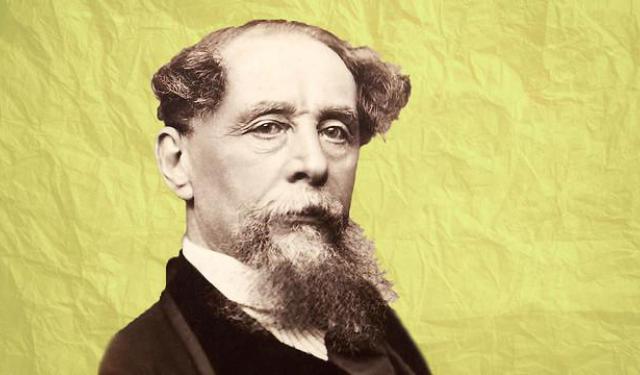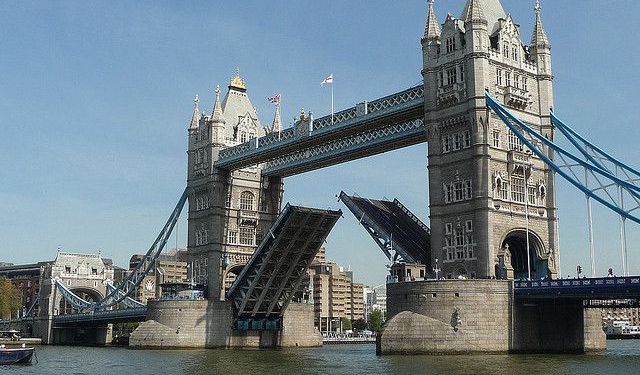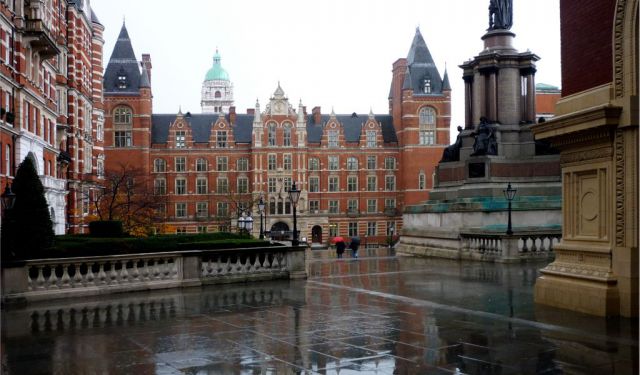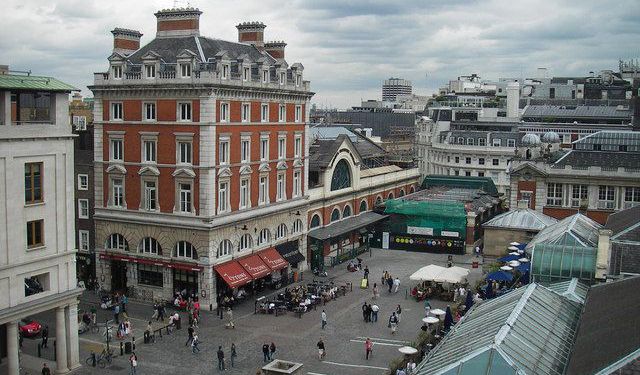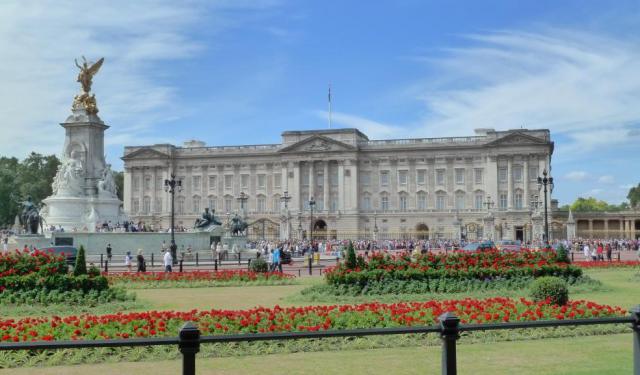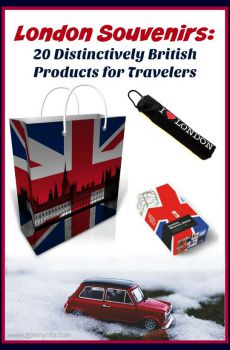Audio Guide: Harry Potter Walking Tour I (Self Guided), London
The Harry Potter phenomenon began with author J.K. Rowling, who famously dreamed up the series while delayed on a train from Manchester to London. With the release of Harry Potter and the Philosopher’s Stone in 1997, the literary world changed forever. Across seven books, readers followed Harry’s evolution from an orphaned schoolboy at Hogwarts to a brave young wizard confronting evil Voldemort. The series sold over 500 million copies, was translated into more than 80 languages, and inspired a global fandom still thriving decades later.
The magic expanded beyond books when the film series launched in 2001. Featuring Daniel Radcliffe, Emma Watson, and Rupert Grint, the eight movies (split from seven books) brought the wizarding world to life with rich visuals, John Williams’ unforgettable score, and a cast of legendary British actors (Maggie Smith, Alan Rickman, Ralph Fiennes, Helena Bonham Carter, to mention but a few). Wrapping up in 2011, the films maintained fidelity to the books, shifting from playful school tales to dark, emotionally intense battles. The result: one of the highest-grossing film franchises of all time.
Central to both the books and films is the city of London, not merely a setting but a character in its own right. Key scenes were filmed in iconic spots throughout the city. Westminster Underground Station appears in Order of the Phoenix, where Harry and Mr. Weasley hilariously grapple with Muggle transportation on their way to the Ministry of Magic. 10 Downing Street may not show up on screen, but it’s featured in Half-Blood Prince, hinting at magical-Muggle diplomacy at the highest level.
Near the Ministry’s fictional location sits Great Scotland Yard, adding a layer of real-world authority to the magical bureaucracy. Meanwhile, Piccadilly Circus stars in Deathly Hallows Part 1, when Harry, Ron, and Hermione apparate into the middle of London traffic, narrowly dodging double-decker buses and startled pedestrians.
Fans can also visit the House of MinaLima, a whimsical gallery near Soho celebrating the graphic design of the films. Then there’s Charing Cross Road, which hides the Leaky Cauldron in plain sight; Cecil Court, widely believed to have inspired Diagon Alley; and Goodwin’s Court, a moody passage that could easily double as Knockturn Alley.
Together, these locations show how London weaves seamlessly into Harry Potter’s universe, blending fantasy with familiar streets. Whether you’re a lifelong fan or a curious Muggle, London’s magical side is always just around the corner.
The magic expanded beyond books when the film series launched in 2001. Featuring Daniel Radcliffe, Emma Watson, and Rupert Grint, the eight movies (split from seven books) brought the wizarding world to life with rich visuals, John Williams’ unforgettable score, and a cast of legendary British actors (Maggie Smith, Alan Rickman, Ralph Fiennes, Helena Bonham Carter, to mention but a few). Wrapping up in 2011, the films maintained fidelity to the books, shifting from playful school tales to dark, emotionally intense battles. The result: one of the highest-grossing film franchises of all time.
Central to both the books and films is the city of London, not merely a setting but a character in its own right. Key scenes were filmed in iconic spots throughout the city. Westminster Underground Station appears in Order of the Phoenix, where Harry and Mr. Weasley hilariously grapple with Muggle transportation on their way to the Ministry of Magic. 10 Downing Street may not show up on screen, but it’s featured in Half-Blood Prince, hinting at magical-Muggle diplomacy at the highest level.
Near the Ministry’s fictional location sits Great Scotland Yard, adding a layer of real-world authority to the magical bureaucracy. Meanwhile, Piccadilly Circus stars in Deathly Hallows Part 1, when Harry, Ron, and Hermione apparate into the middle of London traffic, narrowly dodging double-decker buses and startled pedestrians.
Fans can also visit the House of MinaLima, a whimsical gallery near Soho celebrating the graphic design of the films. Then there’s Charing Cross Road, which hides the Leaky Cauldron in plain sight; Cecil Court, widely believed to have inspired Diagon Alley; and Goodwin’s Court, a moody passage that could easily double as Knockturn Alley.
Together, these locations show how London weaves seamlessly into Harry Potter’s universe, blending fantasy with familiar streets. Whether you’re a lifelong fan or a curious Muggle, London’s magical side is always just around the corner.
How it works: Download the app "GPSmyCity: Walks in 1K+ Cities" from Apple App Store or Google Play Store to your mobile phone or tablet. The app turns your mobile device into a personal tour guide and its built-in GPS navigation functions guide you from one tour stop to next. The app works offline, so no data plan is needed when traveling abroad.
Harry Potter Walking Tour I Map
Guide Name: Harry Potter Walking Tour I
Guide Location: England » London (See other walking tours in London)
Guide Type: Self-guided Walking Tour (Sightseeing)
# of Attractions: 8
Tour Duration: 2 Hour(s)
Travel Distance: 2.7 Km or 1.7 Miles
Author: DanaOffice
Sight(s) Featured in This Guide:
Guide Location: England » London (See other walking tours in London)
Guide Type: Self-guided Walking Tour (Sightseeing)
# of Attractions: 8
Tour Duration: 2 Hour(s)
Travel Distance: 2.7 Km or 1.7 Miles
Author: DanaOffice
Sight(s) Featured in This Guide:
- Westminster Underground Station
- 10 Downing Street
- Great Scotland Yard
- Piccadilly Circus
- House of MinaLima (with Harry Potter exhibition)
- Charing Cross Road
- Cecile Court
- Goodwin’s Court
1) Westminster Underground Station
Westminster Underground Station-the place where politics, architecture, and a touch of wizardry all ride the same escalator. Nestled right in the high-stakes heart of London, this Tube stop practically breathes down Big Ben’s neck. Served by the District, Circle, and Jubilee lines, it’s the public transport equivalent of a Swiss Army knife.
Opened as far back as 1868, the station has undergone numerous upgrades, as you would expect, with its most dramatic transformation happening in the 1990s. This revamp introduced its signature industrial design-exposed steel beams, vast vertical space, cavernous shafts, and modernist, concrete chic-earning it several architectural accolades.
To reach the platforms, you’ll be descending over 30 meters into what feels like a dramatic, metallic bat cave. The escalator ride alone deserves its own soundtrack.
Step back up into daylight, and voilà-you’re face to face with Big Ben, the Houses of Parliament, and Westminster Abbey. Take a few more steps and you’ll be by the River Thames, with the London Eye in the distance and Westminster Bridge daring you to walk into South Bank territory.
But wait-there’s magic, too. In Harry Potter and the Order of the Phoenix, Mr. Weasley makes his awkward debut in the Muggle world here, bumbling through ticket barriers like every tourist with an Oyster card in the wrong hand. They actually shut down the station for a whole day to film this scene-Muggles, avert your eyes! Blink and you’ll also spot Harry and the Order of the Phoenix gang skimming over Westminster on their broomsticks, heading towards the London Eye – yee-haw!!!
So whether you’re a commuter, a sightseer, or just hoping to spot an occasional wizard-in-a-rush, Westminster Underground delivers a fascinating blend of drama, design, and cinematic charm.
Opened as far back as 1868, the station has undergone numerous upgrades, as you would expect, with its most dramatic transformation happening in the 1990s. This revamp introduced its signature industrial design-exposed steel beams, vast vertical space, cavernous shafts, and modernist, concrete chic-earning it several architectural accolades.
To reach the platforms, you’ll be descending over 30 meters into what feels like a dramatic, metallic bat cave. The escalator ride alone deserves its own soundtrack.
Step back up into daylight, and voilà-you’re face to face with Big Ben, the Houses of Parliament, and Westminster Abbey. Take a few more steps and you’ll be by the River Thames, with the London Eye in the distance and Westminster Bridge daring you to walk into South Bank territory.
But wait-there’s magic, too. In Harry Potter and the Order of the Phoenix, Mr. Weasley makes his awkward debut in the Muggle world here, bumbling through ticket barriers like every tourist with an Oyster card in the wrong hand. They actually shut down the station for a whole day to film this scene-Muggles, avert your eyes! Blink and you’ll also spot Harry and the Order of the Phoenix gang skimming over Westminster on their broomsticks, heading towards the London Eye – yee-haw!!!
So whether you’re a commuter, a sightseer, or just hoping to spot an occasional wizard-in-a-rush, Westminster Underground delivers a fascinating blend of drama, design, and cinematic charm.
2) 10 Downing Street
10 Downing Street-or as the British press affectionately calls it, Number 10-is the official residence and workplace of the UK’s Prime Minister. It has been the address for power players since the 18th century. Don’t be fooled by its modest black door-it’s basically the palace of spreadsheets and late-night policy debates-equal parts nerve center and nerve-wracking...
Originally cobbled together from three separate houses (because one apparently wasn't enough for 18th-century real estate ambitions), Number 10 now contains over 100 rooms. The PM’s family lives on the third floor, their kitchen’s tucked away in the basement, and the rest of the place is a maze of offices, reception rooms, and the odd spot for international awkward silences. There’s even a private garden-half an acre, no less-perfect for pondering global crises over a cup of Earl Grey.
Now, speaking of doors, that iconic black front door is not wood but reinforced steel. No keyhole, either-because obviously, in this house, you don’t knock, you get buzzed in. A doorman’s always on duty because the door only opens from the inside. (Some say this is where British stoicism is forged.)
And the phrase “in the hot seat”? Thank Number 10 for that. The hallway used to feature a rather dramatic black chair, complete with a coal-filled drawer underneath to warm the night watchman's backside. Forget ergonomics-that was 18th-century comfort.
The house has taken its share of hits. During WWII, a German bomb rudely messed with the kitchen. Then in 1991, the IRA launched a mortar attack-Downing Street survived, but a splinter still sticks defiantly in the upstairs plaster, like a war story the walls refuse to let go.
Inside, the Grand Staircase displays portraits of every British Prime Minister in order, a visual reminder that political haircuts have come a long way. Tony Blair added bees to the décor (yes, actual plaster bees in the window frames), while Margaret Thatcher insisted on a mini roof over one door-presumably for extra austerity.
Public tours-unfortunately, not happening. Entry is tighter than the King’s biscuit tin. But if you’re into wizardry, you’ll appreciate the Harry Potter trivia-Number 10 doubles as a magical portal, as revealed in The Half-Blood Prince. And yes, Kingsley wizard Shacklebolt worked here undercover, guarding the Prime Minister against the dark forces of Lord Voldemort. There's obviously more to this place than you'd expect...
Tip:
Pair your Downing Street sightseeing with a wider walk through Whitehall and Westminster. Politics, pomp, and a splash of Potter-it’s all just a few steps away.
Originally cobbled together from three separate houses (because one apparently wasn't enough for 18th-century real estate ambitions), Number 10 now contains over 100 rooms. The PM’s family lives on the third floor, their kitchen’s tucked away in the basement, and the rest of the place is a maze of offices, reception rooms, and the odd spot for international awkward silences. There’s even a private garden-half an acre, no less-perfect for pondering global crises over a cup of Earl Grey.
Now, speaking of doors, that iconic black front door is not wood but reinforced steel. No keyhole, either-because obviously, in this house, you don’t knock, you get buzzed in. A doorman’s always on duty because the door only opens from the inside. (Some say this is where British stoicism is forged.)
And the phrase “in the hot seat”? Thank Number 10 for that. The hallway used to feature a rather dramatic black chair, complete with a coal-filled drawer underneath to warm the night watchman's backside. Forget ergonomics-that was 18th-century comfort.
The house has taken its share of hits. During WWII, a German bomb rudely messed with the kitchen. Then in 1991, the IRA launched a mortar attack-Downing Street survived, but a splinter still sticks defiantly in the upstairs plaster, like a war story the walls refuse to let go.
Inside, the Grand Staircase displays portraits of every British Prime Minister in order, a visual reminder that political haircuts have come a long way. Tony Blair added bees to the décor (yes, actual plaster bees in the window frames), while Margaret Thatcher insisted on a mini roof over one door-presumably for extra austerity.
Public tours-unfortunately, not happening. Entry is tighter than the King’s biscuit tin. But if you’re into wizardry, you’ll appreciate the Harry Potter trivia-Number 10 doubles as a magical portal, as revealed in The Half-Blood Prince. And yes, Kingsley wizard Shacklebolt worked here undercover, guarding the Prime Minister against the dark forces of Lord Voldemort. There's obviously more to this place than you'd expect...
Tip:
Pair your Downing Street sightseeing with a wider walk through Whitehall and Westminster. Politics, pomp, and a splash of Potter-it’s all just a few steps away.
3) Great Scotland Yard
Great Scotland Yard. Sounds like it should be somewhere in Edinburgh, doesn’t it? Plot twist: being right in the middle of London, it has absolutely nothing to do with Scotland, kilts, or bagpipes. Instead, it's a street with a past so rich in mystery and mischief, it practically deserves its own detective novel.
Back in medieval times, Scottish royalty bunked here when visiting the English court. A few centuries later, the place became the original headquarters of the Metropolitan Police-a.k.a.. ground zero for modern British crime-solving. Picture stern Victorian detectives in stovepipe hats, jotting down clues and muttering, “Hmm… curious.”
And though the bobbies have since packed up and moved on, No. 3 Great Scotland Yard has been reborn as a five-star hotel, in which Edwardian elegance meets 21st-century glam, with just a sprinkle of Sherlock Holmes chic. Inside, you’ll find classy nods to its law-and-order legacy: vintage police badges, crime noir vibes, and just enough mystery to make you feel like someone might be watching from behind the wallpaper.
But there’s more! This spot also made its silver-screen debut in the Harry Potter films. Scotland Place (just around the corner) played the exterior of the Ministry of Magic. In Order of the Phoenix, Harry and Mr. Weasley slipped into a red phone booth and dialed “62442” to visit the wizarding world’s government headquarters. Sadly, that magical phone box was just a film prop. So, unless you're carrying an invisibility cloak and a production crew, no dice.
The location also reappeared in Deathly Hallows – Part 1 when our favorite trio infiltrated the Ministry in magical disguise. Apparently, even wizards have bureaucratic nightmares.
So, whether you're into true crime, fantasy fiction, or just fancy a cocktail where Victorian detectives once sipped their tea (probably), Great Scotland Yard is where London’s reality and make-believe cozy up for a stylish, storied stay.
Back in medieval times, Scottish royalty bunked here when visiting the English court. A few centuries later, the place became the original headquarters of the Metropolitan Police-a.k.a.. ground zero for modern British crime-solving. Picture stern Victorian detectives in stovepipe hats, jotting down clues and muttering, “Hmm… curious.”
And though the bobbies have since packed up and moved on, No. 3 Great Scotland Yard has been reborn as a five-star hotel, in which Edwardian elegance meets 21st-century glam, with just a sprinkle of Sherlock Holmes chic. Inside, you’ll find classy nods to its law-and-order legacy: vintage police badges, crime noir vibes, and just enough mystery to make you feel like someone might be watching from behind the wallpaper.
But there’s more! This spot also made its silver-screen debut in the Harry Potter films. Scotland Place (just around the corner) played the exterior of the Ministry of Magic. In Order of the Phoenix, Harry and Mr. Weasley slipped into a red phone booth and dialed “62442” to visit the wizarding world’s government headquarters. Sadly, that magical phone box was just a film prop. So, unless you're carrying an invisibility cloak and a production crew, no dice.
The location also reappeared in Deathly Hallows – Part 1 when our favorite trio infiltrated the Ministry in magical disguise. Apparently, even wizards have bureaucratic nightmares.
So, whether you're into true crime, fantasy fiction, or just fancy a cocktail where Victorian detectives once sipped their tea (probably), Great Scotland Yard is where London’s reality and make-believe cozy up for a stylish, storied stay.
4) Piccadilly Circus
Now, Piccadilly Circus is not a literal circus, though with the crowds, neon lights, and eccentric street performers, you’d be forgiven for thinking you’d stumbled into one.
The origins of the name Piccadilly trace back to a 17th-century guy, Robert Baker-not a baker himself, mind you, but a tailor who made a fortune selling "piccadills"-fancy ruffled collars. Baker did so well peddling these neck braces that he built himself a swanky mansion in the area. The aristocrats, clearly not fans of upstart tailors living large, mockingly dubbed it “Piccadilly Hall.” The joke’s on them-the name stuck, and now it’s on the map.
At the center of the circus (once actually circular until 1886), stands a statue famously misidentified as Eros. In truth, it’s Anteros, Eros’s lesser-known brother-the Greek god of requited love (less wild romance, more emotionally mature affection). Because apparently, even gods have to deal with (and occasionally get tired of) complicated relationships...
Just behind him, look up, and you’ll see the legendary wall of illuminated billboards lighting up the north side. The first glowing ad appeared there in 1908, promoting Perrier mineral water like it was the elixir of life. For a perfect “I’m in London” kind of photo, stand at the corner of Regent Street and get those lights framed behind the Tube sign.
Now, take a peek underground. Hidden beneath the chaos, you’ll find two gems. The Criterion Theatre-built in 1873, and mostly below street level-was once ventilated with pumped-in fresh air to counter gaslight fumes. Next door, Piccadilly Circus Station is one of the few fully subterranean Tube stops in the network.
Over on the western side, history buffs can spot a rare relic: a 1935 police call box-one of the last of its kind. And if you're really sharp-eyed, look for one of the Seven Noses of Soho, a quirky sculptural series. Word has it, if you find all seven, unimaginable wealth awaits you. So, go for it!
In Harry Potter and the Deathly Hallows – Part 1, Piccadilly Circus becomes the chaotic landing spot for Harry, Ron, and Hermione after the Death Eaters crash Bill and Fleur’s wedding. It’s all running, panicking, and nearly becoming roadkill via double-decker bus. The scene was shot right in front of the Gap store, just off the main circle-quite the fashion-forward place to dodge dark wizards. In the book, they land at Tottenham Court Road, but the filmmakers clearly wanted a little more drama and dazzle.
Well, aside from possible magical encounters and spontaneous nose hunts, it’s the heart of London’s West End. Basically, it’s where London throws on its glitter, grabs a coffee, and says, “Let’s go!”
The origins of the name Piccadilly trace back to a 17th-century guy, Robert Baker-not a baker himself, mind you, but a tailor who made a fortune selling "piccadills"-fancy ruffled collars. Baker did so well peddling these neck braces that he built himself a swanky mansion in the area. The aristocrats, clearly not fans of upstart tailors living large, mockingly dubbed it “Piccadilly Hall.” The joke’s on them-the name stuck, and now it’s on the map.
At the center of the circus (once actually circular until 1886), stands a statue famously misidentified as Eros. In truth, it’s Anteros, Eros’s lesser-known brother-the Greek god of requited love (less wild romance, more emotionally mature affection). Because apparently, even gods have to deal with (and occasionally get tired of) complicated relationships...
Just behind him, look up, and you’ll see the legendary wall of illuminated billboards lighting up the north side. The first glowing ad appeared there in 1908, promoting Perrier mineral water like it was the elixir of life. For a perfect “I’m in London” kind of photo, stand at the corner of Regent Street and get those lights framed behind the Tube sign.
Now, take a peek underground. Hidden beneath the chaos, you’ll find two gems. The Criterion Theatre-built in 1873, and mostly below street level-was once ventilated with pumped-in fresh air to counter gaslight fumes. Next door, Piccadilly Circus Station is one of the few fully subterranean Tube stops in the network.
Over on the western side, history buffs can spot a rare relic: a 1935 police call box-one of the last of its kind. And if you're really sharp-eyed, look for one of the Seven Noses of Soho, a quirky sculptural series. Word has it, if you find all seven, unimaginable wealth awaits you. So, go for it!
In Harry Potter and the Deathly Hallows – Part 1, Piccadilly Circus becomes the chaotic landing spot for Harry, Ron, and Hermione after the Death Eaters crash Bill and Fleur’s wedding. It’s all running, panicking, and nearly becoming roadkill via double-decker bus. The scene was shot right in front of the Gap store, just off the main circle-quite the fashion-forward place to dodge dark wizards. In the book, they land at Tottenham Court Road, but the filmmakers clearly wanted a little more drama and dazzle.
Well, aside from possible magical encounters and spontaneous nose hunts, it’s the heart of London’s West End. Basically, it’s where London throws on its glitter, grabs a coffee, and says, “Let’s go!”
5) House of MinaLima (with Harry Potter exhibition)
Meet Miraphora Mina and Eduardo Lima-better known in wizarding circles as MinaLima. This magical design duo didn’t just sprinkle a little fairy dust on the Harry Potter films-they conjured up the entire graphic identity. Every Hogwarts acceptance letter, every Weasley’s Wizard Wheezes package, every screaming Daily Prophet headline-were all MinaLima. They practically gave the wizarding world its handwriting.
After the film series wrapped, the pair didn’t just vanish like a disillusionment charm. No, they opened The House of MinaLima-a four-story spellbinding boutique-meets-gallery dedicated to all things wizard-printed-in the heart of London.
On the ground floor, you’ll find a cozy little shop stuffed with magical loot: charming notebooks, cheeky mugs, glittering badges, and storybook prints that look straight out of the Restricted Section.
Climb a few creaky steps and the real magic begins: three full floors of original graphic props from the films, from Quibblers to Quidditch posters to textbook replicas that would make Hermione weep with joy. And yes, pretty much everything’s for sale-so whether you’re on a Muggle’s budget or ready to splash some Gringotts gold, there’s a souvenir waiting for you.
In short: if Diagon Alley had a graphic design department, this would be it.
After the film series wrapped, the pair didn’t just vanish like a disillusionment charm. No, they opened The House of MinaLima-a four-story spellbinding boutique-meets-gallery dedicated to all things wizard-printed-in the heart of London.
On the ground floor, you’ll find a cozy little shop stuffed with magical loot: charming notebooks, cheeky mugs, glittering badges, and storybook prints that look straight out of the Restricted Section.
Climb a few creaky steps and the real magic begins: three full floors of original graphic props from the films, from Quibblers to Quidditch posters to textbook replicas that would make Hermione weep with joy. And yes, pretty much everything’s for sale-so whether you’re on a Muggle’s budget or ready to splash some Gringotts gold, there’s a souvenir waiting for you.
In short: if Diagon Alley had a graphic design department, this would be it.
6) Charing Cross Road
If you’re ever strolling down Charing Cross Road, dodging double-deckers and drowning in the smell of old paper and even older tweed, don’t be fooled-this isn’t just a haven for second-hand books and vintage oddities. This unassuming street inspired the very gateway to London’s magical underbelly: the entrance to the Leaky Cauldron.
Yes, that wonky little wizard pub where Harry grabs a butterbeer and accidentally books a bed for the night in The Prisoner of Azkaban. On the surface, it's just a grimy old shopfront. But to those in the know-or those who’ve read the books seven times-it’s the launchpad to Diagon Alley, the ultimate wizarding mall, where Harry first got his wand and probably a mild case of sensory overload.
And it’s not just the Leaky Cauldron that got a walk-on role. Hagrid and Harry took a wander down this very street, and later, Harry rocketed along it in the Knight Bus, which nearly gave every lamppost a concussion. Oh, and remember those slick black Ministry cars? Yep, Charing Cross Road again.
Even today, the magic lingers. Keep your eyes peeled for a quirky boutique called "A Child of the Jago"-its mannequins are so stylishly eccentric, you’d be forgiven for thinking they stepped out of a wizard fashion week. Robes, cloaks, and a whole lot of attitude.
So next time you're in London and craving a bit of enchantment? Forget Platform 9¾. Check out Charing Cross Road-and bring your best wizard swagger.
Yes, that wonky little wizard pub where Harry grabs a butterbeer and accidentally books a bed for the night in The Prisoner of Azkaban. On the surface, it's just a grimy old shopfront. But to those in the know-or those who’ve read the books seven times-it’s the launchpad to Diagon Alley, the ultimate wizarding mall, where Harry first got his wand and probably a mild case of sensory overload.
And it’s not just the Leaky Cauldron that got a walk-on role. Hagrid and Harry took a wander down this very street, and later, Harry rocketed along it in the Knight Bus, which nearly gave every lamppost a concussion. Oh, and remember those slick black Ministry cars? Yep, Charing Cross Road again.
Even today, the magic lingers. Keep your eyes peeled for a quirky boutique called "A Child of the Jago"-its mannequins are so stylishly eccentric, you’d be forgiven for thinking they stepped out of a wizard fashion week. Robes, cloaks, and a whole lot of attitude.
So next time you're in London and craving a bit of enchantment? Forget Platform 9¾. Check out Charing Cross Road-and bring your best wizard swagger.
7) Cecile Court
Heading down Charing Cross Road, or better still along the parallel St. Martin's Lane-take a few steps to the second turn on your right and you’ll find yourself in the magical time capsule known as Cecil Court. One-block-long and steeped in Victorian charm, this cobbled little pedestrian street is one of London’s oldest-and arguably most enchanted-lanes.
Now, rumor has it that J.K. Rowling took a stroll through here and thought, “Hmm, what if this were crawling with witches and wizards?” And thus, Diagon Alley was born! And honestly, it’s not hard to see why. The shop windows practically wink at you with curiosities: magical and psychic literature, shimmering maps, collector’s posters, and more old banknotes than Gringotts would know what to do with.
There’s The Witch Ball, serving up spells and spine-tinglers, and Marchpane, a children’s bookshop that quietly flexes its rare, signed Harry Potter editions like they’re just another Tuesday. Wandering here, don’t be surprised if you hear a whisper of wand wood against velvet or catch the scent of Butterbeer on the breeze.
It’s Diagon Alley with a London postcode-and no Ministry of Magic ID required.
Now, rumor has it that J.K. Rowling took a stroll through here and thought, “Hmm, what if this were crawling with witches and wizards?” And thus, Diagon Alley was born! And honestly, it’s not hard to see why. The shop windows practically wink at you with curiosities: magical and psychic literature, shimmering maps, collector’s posters, and more old banknotes than Gringotts would know what to do with.
There’s The Witch Ball, serving up spells and spine-tinglers, and Marchpane, a children’s bookshop that quietly flexes its rare, signed Harry Potter editions like they’re just another Tuesday. Wandering here, don’t be surprised if you hear a whisper of wand wood against velvet or catch the scent of Butterbeer on the breeze.
It’s Diagon Alley with a London postcode-and no Ministry of Magic ID required.
8) Goodwin’s Court
Imagine you're wandering through London's Covent Garden, dodging selfie sticks and street performers, when suddenly-bam!-you stumble upon a time portal disguised as an alleyway. Welcome to Goodwin’s Court: dark, narrow, and delightfully mysterious, like London’s best-kept secret and possibly its spookiest shortcut.
Tucked behind the unassuming facade of The Theatre Goers Club of Great Britain-and just a wand-flick away from Charing Cross Road and Cecil Court-this sliver of Georgian charm has been haunting the city since around 1627. Amid those glossy black doors with gleaming knockers, brass nameplates that whisper of bygone businesses, and bow-fronted windows that curve so gracefully, you’d swear they were sketched by a Georgian architect with a flair for drama.
Now, Harry Potter fans-prepare your gasps. Goodwin’s Court didn’t make it to the big screen, but it might as well have. Its moody vibes, authentic old-school lanterns, and shadowy elegance evoke a sense of (and inspired the props created by Warner Bros. for) its creepy evil cinematographic twin, Knockturn Alley. Depending on the weather and lighting-and London’s got options-it can feel equal parts Diagon and doom.
Sure, you won’t find a wand shop or a dodgy apothecary tucked behind those windows here. But the eerie resemblance to the set designs in the films is so uncanny, it might just send shivers down your spine, prompting you to start checking over your shoulder for Death Eaters. Bellatrix Lestrange-is that you, darling?-or is it Lucius Malfoy apparating in the dead of night!?
So brace yourself for this detour. After all, Goodwin’s Court isn’t just a street-it’s a stroll through magical déjà vu...
Tucked behind the unassuming facade of The Theatre Goers Club of Great Britain-and just a wand-flick away from Charing Cross Road and Cecil Court-this sliver of Georgian charm has been haunting the city since around 1627. Amid those glossy black doors with gleaming knockers, brass nameplates that whisper of bygone businesses, and bow-fronted windows that curve so gracefully, you’d swear they were sketched by a Georgian architect with a flair for drama.
Now, Harry Potter fans-prepare your gasps. Goodwin’s Court didn’t make it to the big screen, but it might as well have. Its moody vibes, authentic old-school lanterns, and shadowy elegance evoke a sense of (and inspired the props created by Warner Bros. for) its creepy evil cinematographic twin, Knockturn Alley. Depending on the weather and lighting-and London’s got options-it can feel equal parts Diagon and doom.
Sure, you won’t find a wand shop or a dodgy apothecary tucked behind those windows here. But the eerie resemblance to the set designs in the films is so uncanny, it might just send shivers down your spine, prompting you to start checking over your shoulder for Death Eaters. Bellatrix Lestrange-is that you, darling?-or is it Lucius Malfoy apparating in the dead of night!?
So brace yourself for this detour. After all, Goodwin’s Court isn’t just a street-it’s a stroll through magical déjà vu...
Walking Tours in London, England
Create Your Own Walk in London
Creating your own self-guided walk in London is easy and fun. Choose the city attractions that you want to see and a walk route map will be created just for you. You can even set your hotel as the start point of the walk.
London Introduction Walking Tour
London: the capital of England, heart of the UK, and international heavyweight in history, culture, and sheer charm. Its name comes straight out of Rome. Londinium was founded circa 43 AD as a trading post. Then came Queen Boudica in 61 AD, who, let’s say, didn’t care much for Roman urban planning and burnt it to the ground. But Londinium wasn’t one to stay down-it bounced back, flourished,... view more
Tour Duration: 2 Hour(s)
Travel Distance: 4.2 Km or 2.6 Miles
Tour Duration: 2 Hour(s)
Travel Distance: 4.2 Km or 2.6 Miles
Charles Dickens Tour
Imagine a world without Dickens. No Oliver Twist, no Ebenezer Scrooge, no brooding orphans wandering foggy streets with suspiciously eloquent vocabularies. Tough to picture, right? That’s because Charles Dickens didn’t just leave a mark on literature-he practically steamrolled through it in a horse-drawn carriage. Recognized as the undisputed heavyweight of Victorian storytelling, he pioneered... view more
Tour Duration: 3 Hour(s)
Travel Distance: 4.5 Km or 2.8 Miles
Tour Duration: 3 Hour(s)
Travel Distance: 4.5 Km or 2.8 Miles
Bridges of London
Around thirty bridges span the Thames river in London, each with its own story. Our self-guided walk takes you to see nine such historical structures located in the heart of the city, starting from the storied Westminster Bridge and ending at the iconic Tower Bridge.
The latter has stood over the River Thames in London since 1894 and is one of the finest, most recognizable bridges in the... view more
Tour Duration: 2 Hour(s)
Travel Distance: 5.2 Km or 3.2 Miles
The latter has stood over the River Thames in London since 1894 and is one of the finest, most recognizable bridges in the... view more
Tour Duration: 2 Hour(s)
Travel Distance: 5.2 Km or 3.2 Miles
Kensington/Knightsbridge Walking Tour
Situated just below Hyde Park, Knightsbridge and South Kensington are two adjacent neighborhoods with grand Victorian homes and leafy garden squares. Home to London’s most expensive homes, Knightsbridge has some of the highest density of millionaires in the world. This is clearly reflected in the selection of stores & restaurants in the area, including the famous Harvey Nichols and Harrods... view more
Tour Duration: 2 Hour(s)
Travel Distance: 4.5 Km or 2.8 Miles
Tour Duration: 2 Hour(s)
Travel Distance: 4.5 Km or 2.8 Miles
Covent Garden Walking Tour
A shopping and entertainment hub on the eastern fringes of London's West End, Covent Garden is a district historically associated with the former fruit-and-vegetable market – currently a shopping spot popular with locals and tourists alike.
Once a slum area, today the north of the district is given over to independent shops centered on Neal's Yard and Seven Dials. Both places offer... view more
Tour Duration: 2 Hour(s)
Travel Distance: 3.0 Km or 1.9 Miles
Once a slum area, today the north of the district is given over to independent shops centered on Neal's Yard and Seven Dials. Both places offer... view more
Tour Duration: 2 Hour(s)
Travel Distance: 3.0 Km or 1.9 Miles
Walk around Buckingham Palace
Buckingham Palace, the British monarch's official residence, is a must-see for anyone visiting London, but so are the adjacent royal establishments that give a unique window into the royal way of life. On this self-guided walking tour, along with Buckingham Palace and its memorable fountain, you will visit the St. James's private royal residence, the wonderful Queen's Gallery, and... view more
Tour Duration: 1 Hour(s)
Travel Distance: 2.3 Km or 1.4 Miles
Tour Duration: 1 Hour(s)
Travel Distance: 2.3 Km or 1.4 Miles
Useful Travel Guides for Planning Your Trip
London Souvenirs: 18 Distinctively British Products for Travelers
Most visitors to London consider shopping as part of their must-do London experience. From street markets to Victorian arcades to snobbish Sloane Square to busy Oxford Street, there are a host of shops selling items which typically represent this vibrant city. Whether you are shopping for souvenirs...
The Most Popular Cities
/ view all
